The concept of helping customers navigate the purchasing process more successfully—known as guided selling—isn’t new. Still, it has changed dramatically over the past couple of years with the introduction of artificial intelligence (AI). Advanced machine learning (ML) algorithms are replacing if-this-then-that automation, uncovering plenty of opportunities to streamline your workflow and enhance decision-making.
In this guide, we explain how AI-guided selling works and why you should leverage it. Here’s a sneak peek into its potential: using AI in our B2B lead generation process resulted in 2–3x more response rates and conversions across the 800k+ cold emails we sent each month. 🚀
After discussing how AI-guided selling can give you similar results, we’ll explain how to implement it effectively and without unreasonable costs.
What Is AI-Guided Selling?

AI-guided selling is a sales technique that leverages AI tools to create deeper customer engagements and optimize the sales process. This technique significantly reduces the need for manual work through robust automation and AI-powered data analysis, freeing up more time for high-impact activities.
The term “AI-guided” doesn’t mean algorithms take the wheel. AI isn’t meant to replace SDRs but to support them by handling menial tasks while ensuring humans still call the shots.
To better explain this relationship, we need to contrast AI-guided selling with conventional guided selling.
AI-Guided Selling vs. Traditional Guided Selling
The goal of traditional guided selling is to enable in-depth insights into buyer behavior so that you can provide personalized experiences that guide the prospect through the buying journey more effectively. This technique supports marketing and sales pros through various technologies, such as:
- Data collection platforms
- Workflow automation software
- Campaign building tools
AI-guided selling accomplishes the same goal but introduces machine learning and natural language processing to streamline the process and potentially deliver better results.
Let's take inbound automation as an example. When a prospect fills out a web form, the relevant data is sent to a CRM or a sales platform. With traditional guided selling, that data is segmented through rule-based logic and preset criteria, which can be time-consuming to implement and maintain and might lack flexibility and personalization. ❌
In contrast, AI uses predictive analytics to analyze historical trends and process web forms. SDRs don't need to set up or update the rules, allowing for a more dynamic segmentation with less manual work.
You can enjoy such a streamlined workflow regardless of your specific implementation of AI-guided selling—and you can take plenty of approaches thanks to the technique’s wide application.
💡 Bonus read: AI-guided selling is only one of the many ways to leverage AI in your campaigns. To discover others, read our guides on AI sales enablement, AI sales training, and AI lead scoring.
The Main Use Cases of AI-Guided Selling

AI-guided selling can be implemented across the sales cycle. The most common use cases of this technique are as follows:
- Data enrichment
- Sales funnel mapping
- Content personalization
- Cross-selling and upselling
- Prospect prioritization
Data Enrichment
Regardless of the technologies used, the foundation of guided selling is robust data. To handhold prospects through the buyer’s journey, you have to go far beyond basic information like their email and demographics. Some of the key data points you need include:
- Behavioral data
- Likes and interests
- Firmographics
- Technographics
While a non-AI platform can provide comprehensive data, you might need a more advanced solution to fill any gaps. Unlike traditional tools, an AI researcher can scour numerous databases at lightning speed to help you uncover hard-to-find data, sparing you tedious manual research.
Sales Funnel Mapping
At a basic level, a typical sales funnel has four stages shown in the following table:
The challenge is that not every customer starts the journey at the same stage or moves linearly through the funnel. Someone might’ve gotten a recommendation from a trusted peer and can skip a few stages. In contrast, a prospect might’ve been ready to buy, but they found another solution and returned to the interest stage.
AI-enabled platforms can analyze a massive number of buyer intent signals to tell you where each prospect is. You can use this insight to target prospects with corresponding sales initiatives and guide them through the funnel more effortlessly.
Content Personalization

Generative AI has changed how outreach content is created. You no longer have to spend hours perfecting a sales email—AI can draft it in a few seconds, and you can make adjustments as needed.
More importantly, capable AI solutions can automatically include prospect-specific information in the email to make it personalized from the get-go. This way, you’ll know precisely what to say to a prospect to guide the sales process in the right direction. 🤝
You can choose an AI solution that finds the data you need and leverages it through its generative capabilities. Doing so helps you avoid jugging multiple solutions and expanding your tech stack unnecessarily.
💡 Bonus read: If you want a primer on using generative AI in sales, read our articles on how to use ChatGPT to write an email, ChatGPT prompts for sales emails, and ChatGPT prompts for sales.
Cross-Selling and Upselling
Your product or service most likely includes upgrades and useful ancillaries. The problem is that deciding which prospects to match them with might be hard. This is where predictive and prescriptive AI can make a world of difference. The following table explains both terms:
AI-guided selling combines both types of AI, letting you understand which ancillary each prospect might be interested in. As a result, you can launch more precise and effective upselling and cross-selling campaigns. 🎯
Prospect Prioritization
SDRs have a lot on their plate, so the workload can sometimes get quite overwhelming. What further complicates this issue is a lack of proper prioritization. Your reps may not know which prospects to focus on to hit their targets effectively, which can dilute their outreach efforts.
AI-guided selling resolves this issue. A robust solution can suggest which prospects to target based on a comprehensive analysis of numerous data points, such as:
- Buyer intent signals
- Online behavior
- Past sales engagements
This means you don’t need to take shots in the dark and waste your time or resources. Your team can identify low-hanging fruit effortlessly to get quick wins.
Benefits of AI-Guided Selling
Besides streamlining your workflow and ensuring personalized experiences, AI-guided selling offers various benefits, such as:
- Scalability—Due to the considerable efficiency increases you can expect after adopting AI-guided selling, you can scale your sales operations more effortlessly and expand your customer base
- Competitive advantage—Businesses are leveraging AI left and right, so adding AI-guided selling to your workflow is an excellent way to stay competitive and avoid falling behind on key trends
- Increased ROI—Less manual work means fewer man-hours wasted on mundane processes. Coupled with more targeted campaigns, this can do wonders for your bottom line and ROI
- Improved customer experience—Whether you’re bringing in new customers or nurturing existing ones to boost retention, AI-guided selling puts your buyers front and center to ensure pleasant experiences
These benefits most likely won’t come overnight or without obstacles. As a new and quite volatile technology, AI comes with a fair share of challenges you’ll need to overcome.
Limitations of AI-Guided Selling To Consider

Due to the diverse capabilities of AI-powered tools, some teams end up relying on them a bit too heavily. While AI models are impressively capable, they suffer from a few issues you should know, most notably:
- ❗ Potential data accuracy issues—AI models are trained on various datasets, which often aren’t perfect. This can result in inaccurate or lackluster data that might hinder your outreach campaigns
- 🤖 Lack of emotional intelligence—One of the main differences between AI and humans is emotional intelligence, which is an essential sales skill. Relying on AI to guide your sales process too much can backfire, especially if you don’t ensure proper oversight
- 😵💫 Technical complexities—As AI-guided selling impacts various sales activities, setting it up can be challenging if you don’t opt for a user-friendly solution. This can harm your efficiency, undermining the purpose of AI implementation
While we’re still far from a fully reliable AI-guided selling solution, you can take various steps to maximize your platform’s usability while avoiding the main pitfalls.
Best Practices for Leveraging AI-Guided Selling
When you’re ready to implement AI-guided selling, follow these practices to ensure streamlined adoption and best results:
No matter how you approach and structure AI-guided selling, your chosen platform makes a world of difference. If you want a robust, reliable solution, check out Clay. 🌟
Create Personalized Experiences Effortlessly With Clay

Clay is a cutting-edge data enrichment and sales automation platform offering various features that support AI-guided selling. The most notable AI solutions in Clay’s roster include the following:
- Claygent
- AI messaging
- OpenAI integration
- AI templates
We’ll go over each feature to show how it ensures effortless AI-guided selling.
Claygent
Claygent is an advanced AI researcher and assistant powered by ChatGPT. It lets you perform countless tasks crucial to AI-guided selling, such as:
- Finding and enriching people with numerous data points (contact information, career details, demographics, social media updates, etc.)
- Uncovering hard-to-find company data (funding rounds, tech stack, etc.)
- Executing and summarizing prospect research
- Building industry-specific campaigns
All of this (and much more) happens through simple prompts and minimal input. You can spare your team painstaking research and let them focus on developing effective campaigns. 🧑💻
Want to see Claygent in action? Check out this quick walkthrough:
AI messaging
Effective copywriting can be laborious and time-consuming. With Clay’s AI-powered messaging, it takes minutes. When you collect prospect data, the platform’s email builder pulls it automatically from your Clay table to write personalized emails at scale. ✍️
All you need to do is fire up the tool and provide any specific input you want to include, and you’ll have match-ready emails in no time.

Clay integrates with over 200 platforms, including popular sales execution software, so you can push emails to your sequencer in no more than a few clicks and kick off your campaign. 📩
OpenAI integration
Clay integrates with OpenAI to leverage the company’s capable solutions and automate AI-guided selling. Some of the main actions you can perform directly from Clay include the following:
Combined with Claygent’s many capabilities, Clay’s OpenAI integration lets you streamline numerous AI-guided selling processes, from researching your prospects to creating personalized materials. 📃
AI templates
To further simplify AI-guided selling and ensure you don’t need to build workflows from scratch, Clay comes with various AI templates that serve as pre-built workflows. You can use the templates to complete many activities, such as:
- Generating target ICPs
- Writing personalized emails based on multiple research types
- Recruiting sales managers
- Finding SMB contact info and writing a compliment
Next-Level Data Enrichment for Enhanced Personalization
You can’t execute successful outbound campaigns without abundant data, and Clay is here to help. It integrates with over 50 data providers to help you find all the prospect information you need. The best part is—you don’t need to leave Clay at any point during the process or juggle a bunch of different platforms.
This is possible thanks to waterfall enrichment—a simple process that uncovers virtually any relevant data point in three quick steps:
- Select the data you need
- Choose your preferred data sources
- Let Clay browse them one by one until it finds your chosen data
If you want a more hands-on way of getting the data you need, you can use Clay’s Chrome extension. It lets you use pre-built recipes to extract structured data effortlessly. For more flexibility, you can create custom recipes and map data independently.
Plans for Everyone’s Budget
AI-guided selling shouldn’t burn a hole in your pocket. That’s why Clay lets you use its core features for free. The free plan gives you 100 monthly credits to perform various activities and explore the platform first-hand.
If you wish to upgrade and execute elaborate campaigns, you can choose one of the following paid plans:
Thanks to its affordable plans and considerable time savings, Clay can significantly improve your bottom line. At the same time, it releases lots of pressure from SDRs, who can avoid tedious work and focus on tasks that matter. 🔥
If you need an example of what’s possible, here’s what one user said about its workflow before and after Clay:

Create Your Free Clay Account
If you want to leverage Clay for your AI-guided selling initiatives, you can get started in three easy steps:
- Head to the signup page
- Enter your name, email address, and password
- Explore Clay’s AI features and other capabilities
To discover more automation capabilities and see Clay in action, visit Clay University for tutorials and product walkthroughs. You can also join Clay’s Slack community of marketing and sales pros to see how they’re using the platform.
For product updates and tips for launching successful outbound campaigns, sign up for the newsletter.
💡 Keep reading: Want to learn more about AI sales tactics and techniques? Check out these guides:
The concept of helping customers navigate the purchasing process more successfully—known as guided selling—isn’t new. Still, it has changed dramatically over the past couple of years with the introduction of artificial intelligence (AI). Advanced machine learning (ML) algorithms are replacing if-this-then-that automation, uncovering plenty of opportunities to streamline your workflow and enhance decision-making.
In this guide, we explain how AI-guided selling works and why you should leverage it. Here’s a sneak peek into its potential: using AI in our B2B lead generation process resulted in 2–3x more response rates and conversions across the 800k+ cold emails we sent each month. 🚀
After discussing how AI-guided selling can give you similar results, we’ll explain how to implement it effectively and without unreasonable costs.
What Is AI-Guided Selling?

AI-guided selling is a sales technique that leverages AI tools to create deeper customer engagements and optimize the sales process. This technique significantly reduces the need for manual work through robust automation and AI-powered data analysis, freeing up more time for high-impact activities.
The term “AI-guided” doesn’t mean algorithms take the wheel. AI isn’t meant to replace SDRs but to support them by handling menial tasks while ensuring humans still call the shots.
To better explain this relationship, we need to contrast AI-guided selling with conventional guided selling.
AI-Guided Selling vs. Traditional Guided Selling
The goal of traditional guided selling is to enable in-depth insights into buyer behavior so that you can provide personalized experiences that guide the prospect through the buying journey more effectively. This technique supports marketing and sales pros through various technologies, such as:
- Data collection platforms
- Workflow automation software
- Campaign building tools
AI-guided selling accomplishes the same goal but introduces machine learning and natural language processing to streamline the process and potentially deliver better results.
Let's take inbound automation as an example. When a prospect fills out a web form, the relevant data is sent to a CRM or a sales platform. With traditional guided selling, that data is segmented through rule-based logic and preset criteria, which can be time-consuming to implement and maintain and might lack flexibility and personalization. ❌
In contrast, AI uses predictive analytics to analyze historical trends and process web forms. SDRs don't need to set up or update the rules, allowing for a more dynamic segmentation with less manual work.
You can enjoy such a streamlined workflow regardless of your specific implementation of AI-guided selling—and you can take plenty of approaches thanks to the technique’s wide application.
💡 Bonus read: AI-guided selling is only one of the many ways to leverage AI in your campaigns. To discover others, read our guides on AI sales enablement, AI sales training, and AI lead scoring.
The Main Use Cases of AI-Guided Selling

AI-guided selling can be implemented across the sales cycle. The most common use cases of this technique are as follows:
- Data enrichment
- Sales funnel mapping
- Content personalization
- Cross-selling and upselling
- Prospect prioritization
Data Enrichment
Regardless of the technologies used, the foundation of guided selling is robust data. To handhold prospects through the buyer’s journey, you have to go far beyond basic information like their email and demographics. Some of the key data points you need include:
- Behavioral data
- Likes and interests
- Firmographics
- Technographics
While a non-AI platform can provide comprehensive data, you might need a more advanced solution to fill any gaps. Unlike traditional tools, an AI researcher can scour numerous databases at lightning speed to help you uncover hard-to-find data, sparing you tedious manual research.
Sales Funnel Mapping
At a basic level, a typical sales funnel has four stages shown in the following table:
The challenge is that not every customer starts the journey at the same stage or moves linearly through the funnel. Someone might’ve gotten a recommendation from a trusted peer and can skip a few stages. In contrast, a prospect might’ve been ready to buy, but they found another solution and returned to the interest stage.
AI-enabled platforms can analyze a massive number of buyer intent signals to tell you where each prospect is. You can use this insight to target prospects with corresponding sales initiatives and guide them through the funnel more effortlessly.
Content Personalization

Generative AI has changed how outreach content is created. You no longer have to spend hours perfecting a sales email—AI can draft it in a few seconds, and you can make adjustments as needed.
More importantly, capable AI solutions can automatically include prospect-specific information in the email to make it personalized from the get-go. This way, you’ll know precisely what to say to a prospect to guide the sales process in the right direction. 🤝
You can choose an AI solution that finds the data you need and leverages it through its generative capabilities. Doing so helps you avoid jugging multiple solutions and expanding your tech stack unnecessarily.
💡 Bonus read: If you want a primer on using generative AI in sales, read our articles on how to use ChatGPT to write an email, ChatGPT prompts for sales emails, and ChatGPT prompts for sales.
Cross-Selling and Upselling
Your product or service most likely includes upgrades and useful ancillaries. The problem is that deciding which prospects to match them with might be hard. This is where predictive and prescriptive AI can make a world of difference. The following table explains both terms:
AI-guided selling combines both types of AI, letting you understand which ancillary each prospect might be interested in. As a result, you can launch more precise and effective upselling and cross-selling campaigns. 🎯
Prospect Prioritization
SDRs have a lot on their plate, so the workload can sometimes get quite overwhelming. What further complicates this issue is a lack of proper prioritization. Your reps may not know which prospects to focus on to hit their targets effectively, which can dilute their outreach efforts.
AI-guided selling resolves this issue. A robust solution can suggest which prospects to target based on a comprehensive analysis of numerous data points, such as:
- Buyer intent signals
- Online behavior
- Past sales engagements
This means you don’t need to take shots in the dark and waste your time or resources. Your team can identify low-hanging fruit effortlessly to get quick wins.
Benefits of AI-Guided Selling
Besides streamlining your workflow and ensuring personalized experiences, AI-guided selling offers various benefits, such as:
- Scalability—Due to the considerable efficiency increases you can expect after adopting AI-guided selling, you can scale your sales operations more effortlessly and expand your customer base
- Competitive advantage—Businesses are leveraging AI left and right, so adding AI-guided selling to your workflow is an excellent way to stay competitive and avoid falling behind on key trends
- Increased ROI—Less manual work means fewer man-hours wasted on mundane processes. Coupled with more targeted campaigns, this can do wonders for your bottom line and ROI
- Improved customer experience—Whether you’re bringing in new customers or nurturing existing ones to boost retention, AI-guided selling puts your buyers front and center to ensure pleasant experiences
These benefits most likely won’t come overnight or without obstacles. As a new and quite volatile technology, AI comes with a fair share of challenges you’ll need to overcome.
Limitations of AI-Guided Selling To Consider

Due to the diverse capabilities of AI-powered tools, some teams end up relying on them a bit too heavily. While AI models are impressively capable, they suffer from a few issues you should know, most notably:
- ❗ Potential data accuracy issues—AI models are trained on various datasets, which often aren’t perfect. This can result in inaccurate or lackluster data that might hinder your outreach campaigns
- 🤖 Lack of emotional intelligence—One of the main differences between AI and humans is emotional intelligence, which is an essential sales skill. Relying on AI to guide your sales process too much can backfire, especially if you don’t ensure proper oversight
- 😵💫 Technical complexities—As AI-guided selling impacts various sales activities, setting it up can be challenging if you don’t opt for a user-friendly solution. This can harm your efficiency, undermining the purpose of AI implementation
While we’re still far from a fully reliable AI-guided selling solution, you can take various steps to maximize your platform’s usability while avoiding the main pitfalls.
Best Practices for Leveraging AI-Guided Selling
When you’re ready to implement AI-guided selling, follow these practices to ensure streamlined adoption and best results:
No matter how you approach and structure AI-guided selling, your chosen platform makes a world of difference. If you want a robust, reliable solution, check out Clay. 🌟
Create Personalized Experiences Effortlessly With Clay

Clay is a cutting-edge data enrichment and sales automation platform offering various features that support AI-guided selling. The most notable AI solutions in Clay’s roster include the following:
- Claygent
- AI messaging
- OpenAI integration
- AI templates
We’ll go over each feature to show how it ensures effortless AI-guided selling.
Claygent
Claygent is an advanced AI researcher and assistant powered by ChatGPT. It lets you perform countless tasks crucial to AI-guided selling, such as:
- Finding and enriching people with numerous data points (contact information, career details, demographics, social media updates, etc.)
- Uncovering hard-to-find company data (funding rounds, tech stack, etc.)
- Executing and summarizing prospect research
- Building industry-specific campaigns
All of this (and much more) happens through simple prompts and minimal input. You can spare your team painstaking research and let them focus on developing effective campaigns. 🧑💻
Want to see Claygent in action? Check out this quick walkthrough:
AI messaging
Effective copywriting can be laborious and time-consuming. With Clay’s AI-powered messaging, it takes minutes. When you collect prospect data, the platform’s email builder pulls it automatically from your Clay table to write personalized emails at scale. ✍️
All you need to do is fire up the tool and provide any specific input you want to include, and you’ll have match-ready emails in no time.

Clay integrates with over 200 platforms, including popular sales execution software, so you can push emails to your sequencer in no more than a few clicks and kick off your campaign. 📩
OpenAI integration
Clay integrates with OpenAI to leverage the company’s capable solutions and automate AI-guided selling. Some of the main actions you can perform directly from Clay include the following:
Combined with Claygent’s many capabilities, Clay’s OpenAI integration lets you streamline numerous AI-guided selling processes, from researching your prospects to creating personalized materials. 📃
AI templates
To further simplify AI-guided selling and ensure you don’t need to build workflows from scratch, Clay comes with various AI templates that serve as pre-built workflows. You can use the templates to complete many activities, such as:
- Generating target ICPs
- Writing personalized emails based on multiple research types
- Recruiting sales managers
- Finding SMB contact info and writing a compliment
Next-Level Data Enrichment for Enhanced Personalization
You can’t execute successful outbound campaigns without abundant data, and Clay is here to help. It integrates with over 50 data providers to help you find all the prospect information you need. The best part is—you don’t need to leave Clay at any point during the process or juggle a bunch of different platforms.
This is possible thanks to waterfall enrichment—a simple process that uncovers virtually any relevant data point in three quick steps:
- Select the data you need
- Choose your preferred data sources
- Let Clay browse them one by one until it finds your chosen data
If you want a more hands-on way of getting the data you need, you can use Clay’s Chrome extension. It lets you use pre-built recipes to extract structured data effortlessly. For more flexibility, you can create custom recipes and map data independently.
Plans for Everyone’s Budget
AI-guided selling shouldn’t burn a hole in your pocket. That’s why Clay lets you use its core features for free. The free plan gives you 100 monthly credits to perform various activities and explore the platform first-hand.
If you wish to upgrade and execute elaborate campaigns, you can choose one of the following paid plans:
Thanks to its affordable plans and considerable time savings, Clay can significantly improve your bottom line. At the same time, it releases lots of pressure from SDRs, who can avoid tedious work and focus on tasks that matter. 🔥
If you need an example of what’s possible, here’s what one user said about its workflow before and after Clay:

Create Your Free Clay Account
If you want to leverage Clay for your AI-guided selling initiatives, you can get started in three easy steps:
- Head to the signup page
- Enter your name, email address, and password
- Explore Clay’s AI features and other capabilities
To discover more automation capabilities and see Clay in action, visit Clay University for tutorials and product walkthroughs. You can also join Clay’s Slack community of marketing and sales pros to see how they’re using the platform.
For product updates and tips for launching successful outbound campaigns, sign up for the newsletter.
💡 Keep reading: Want to learn more about AI sales tactics and techniques? Check out these guides:





















.avif)
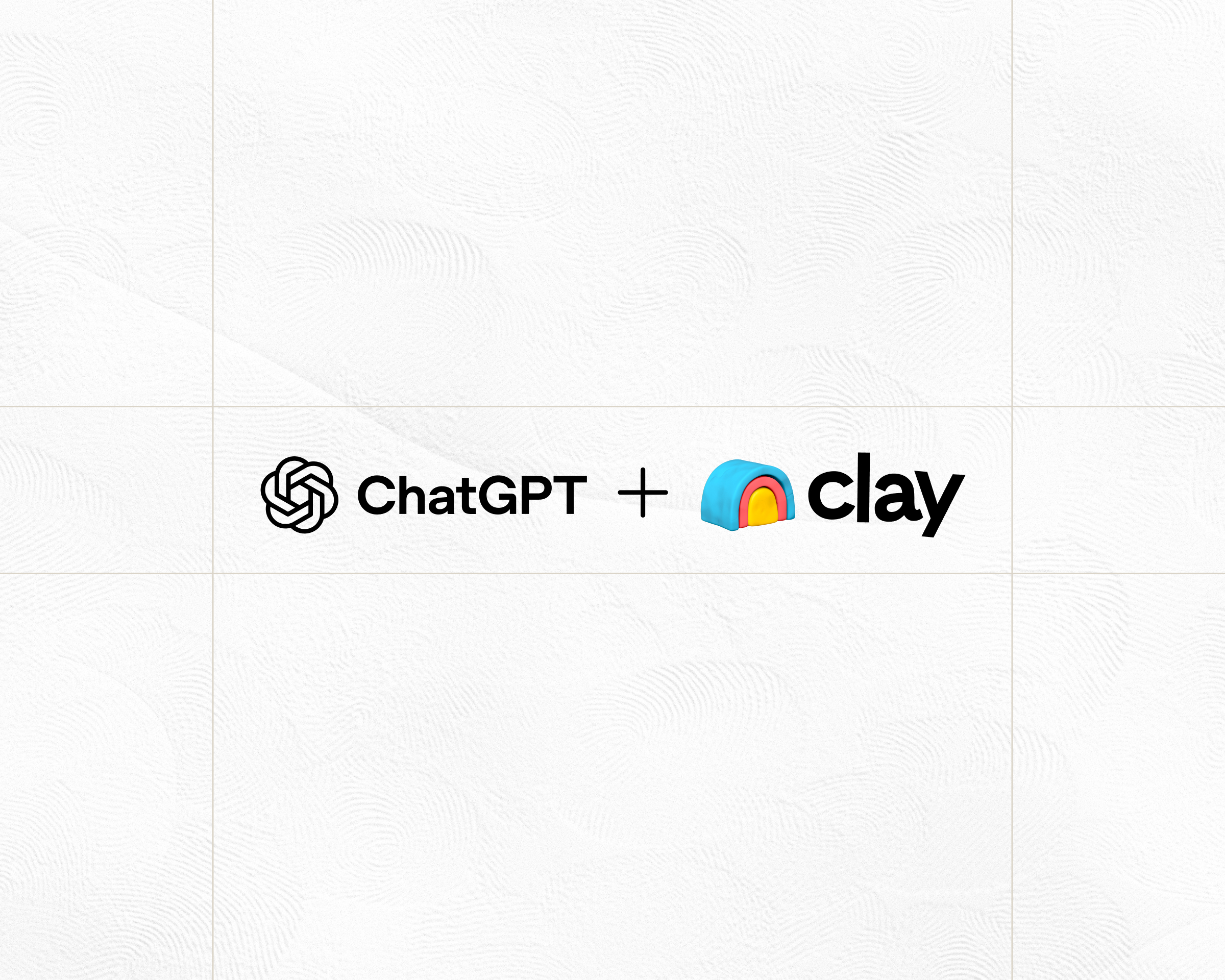
.jpg)
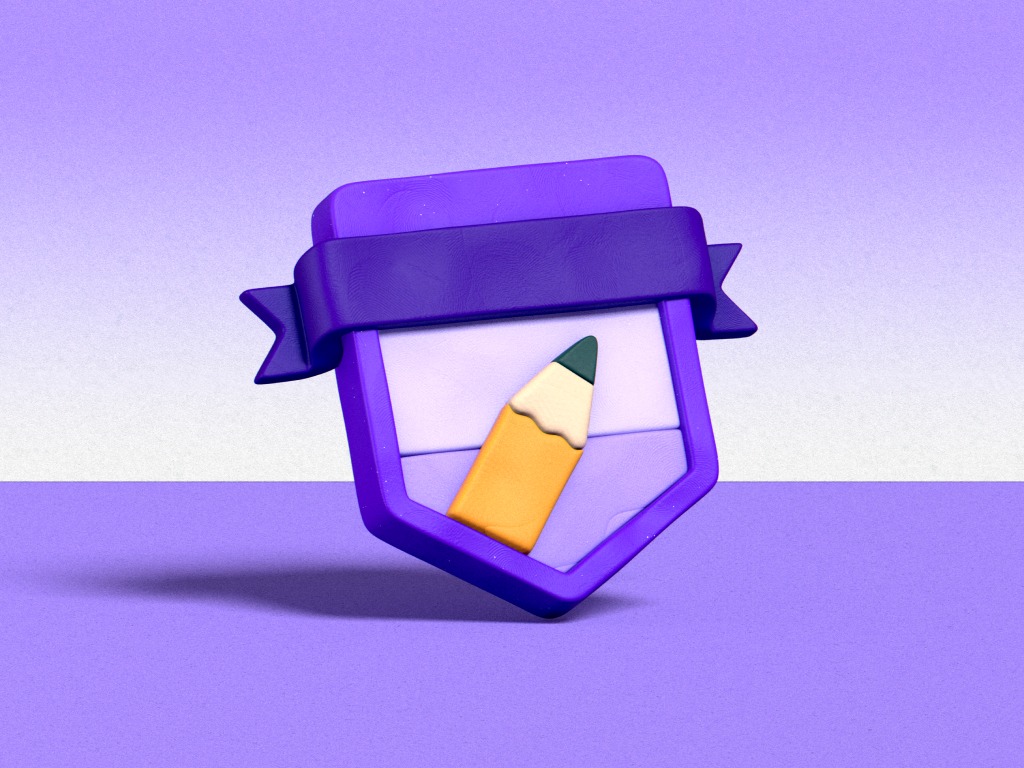



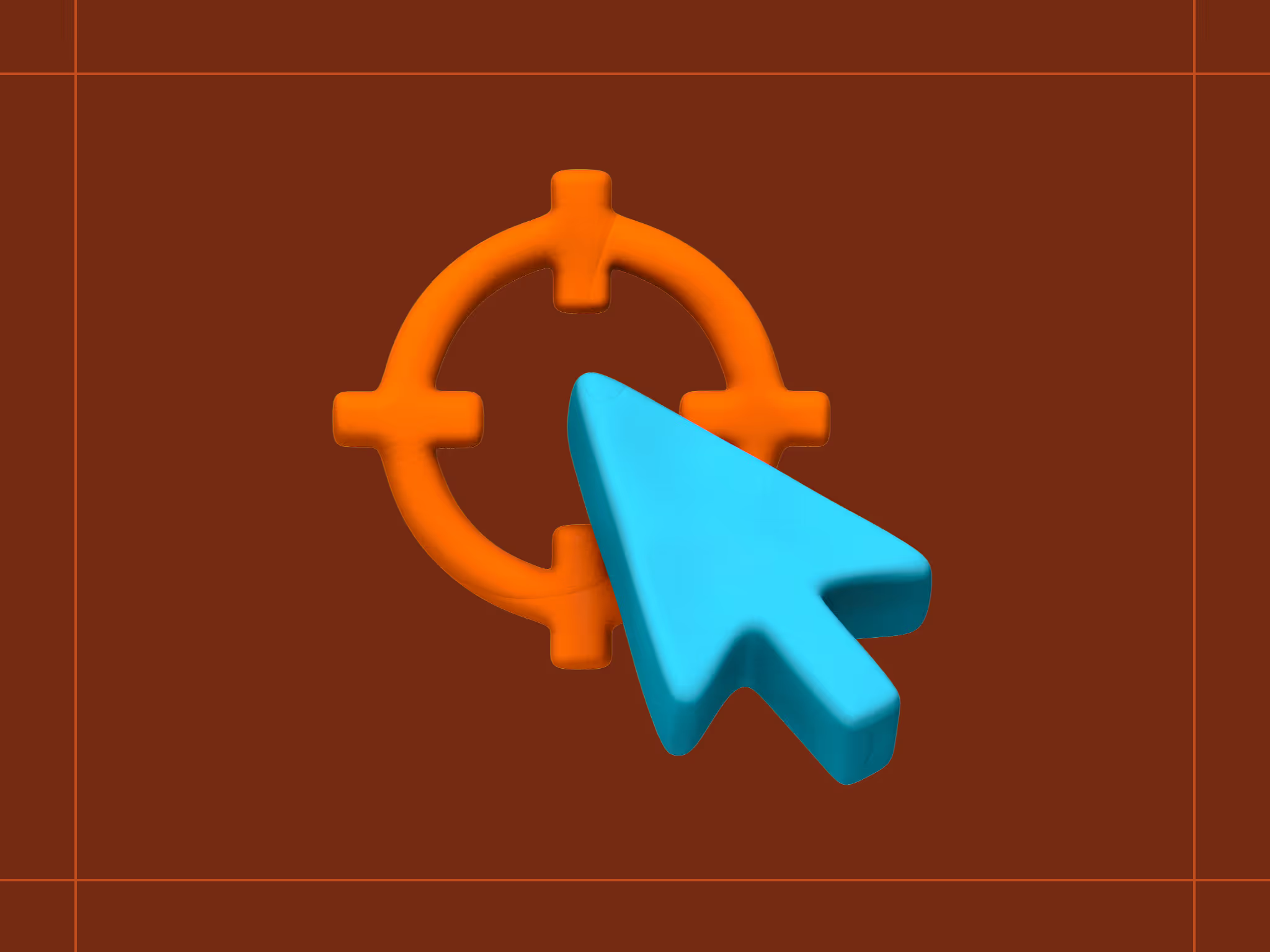
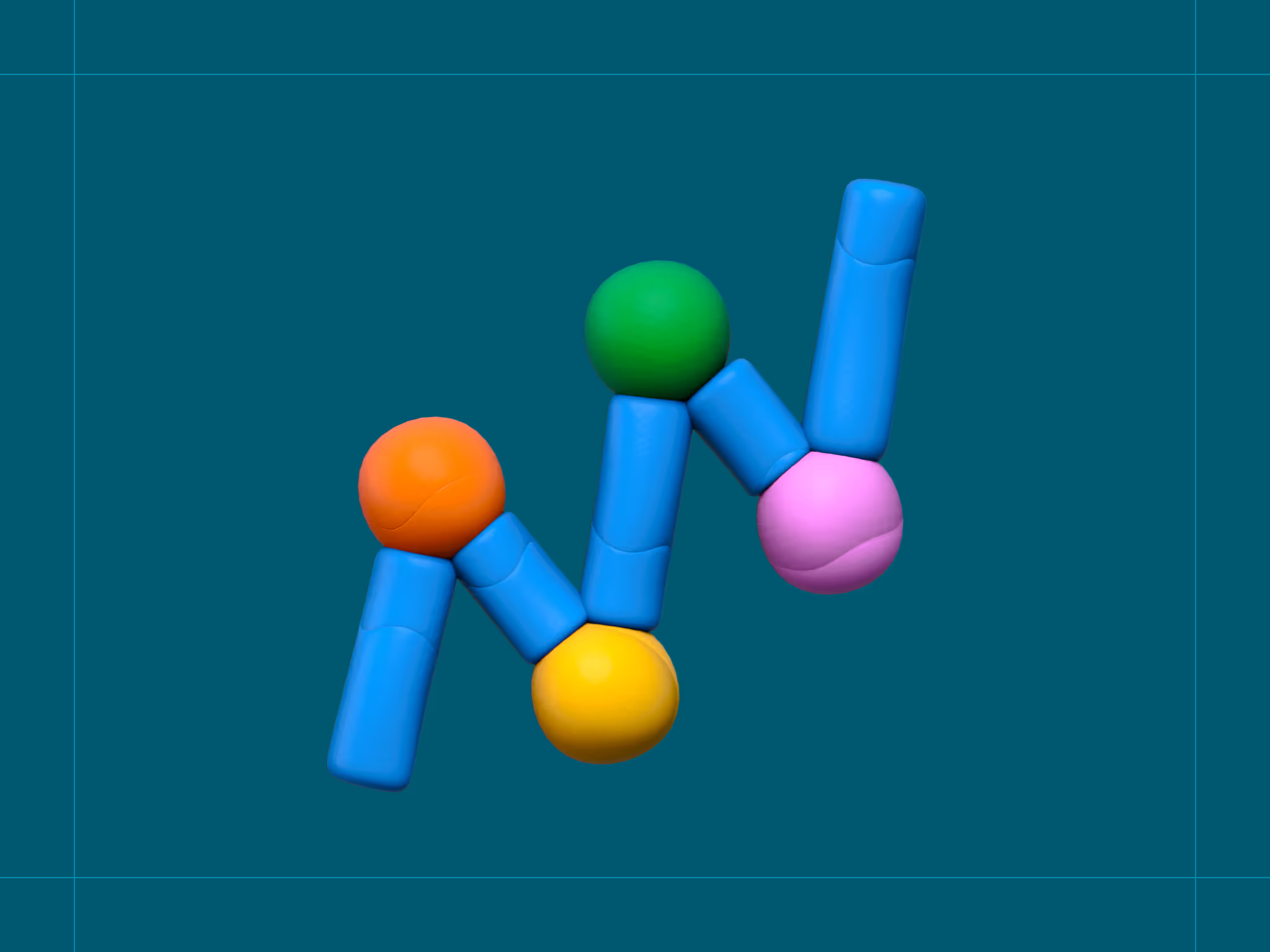
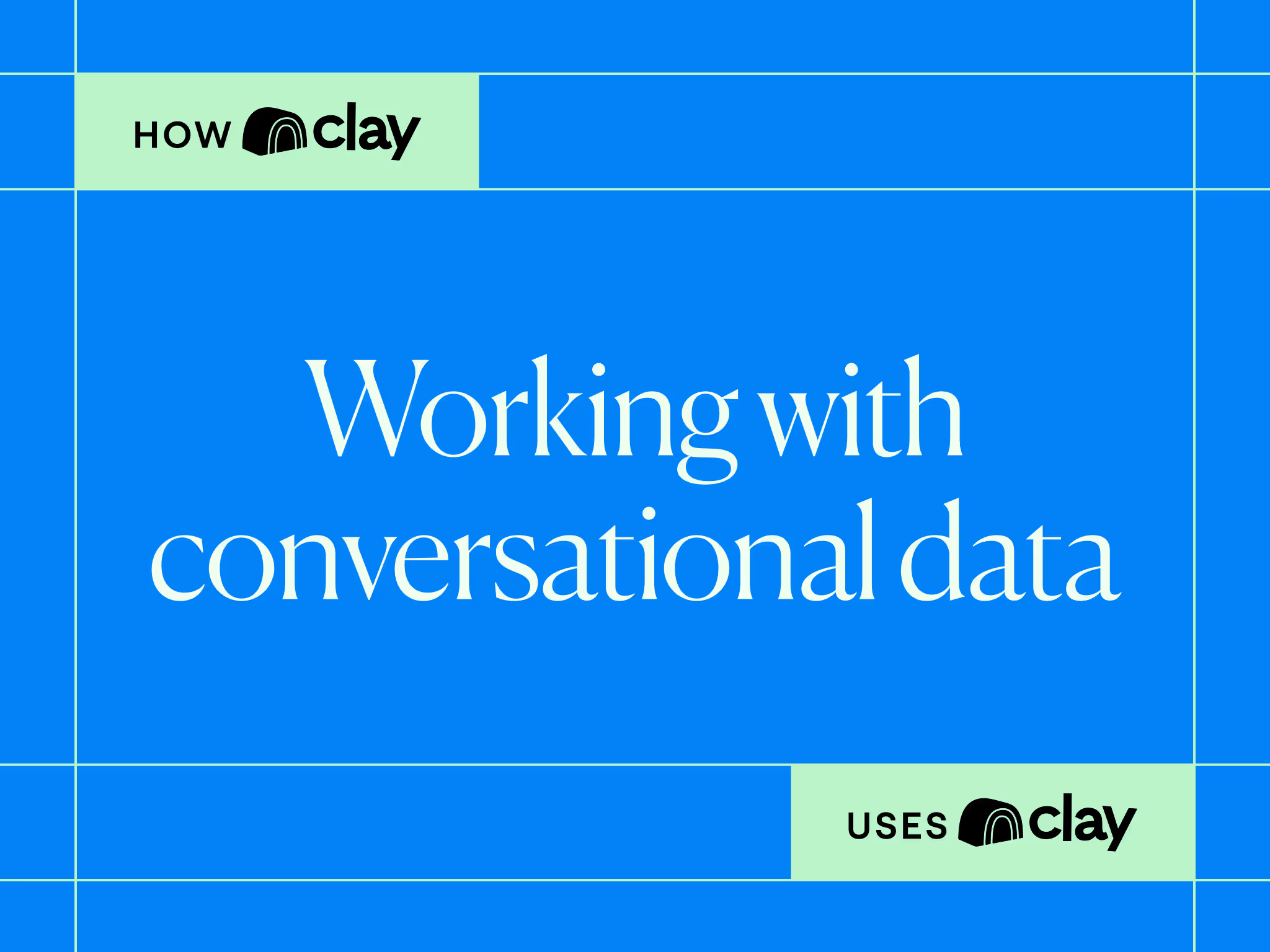
.avif)
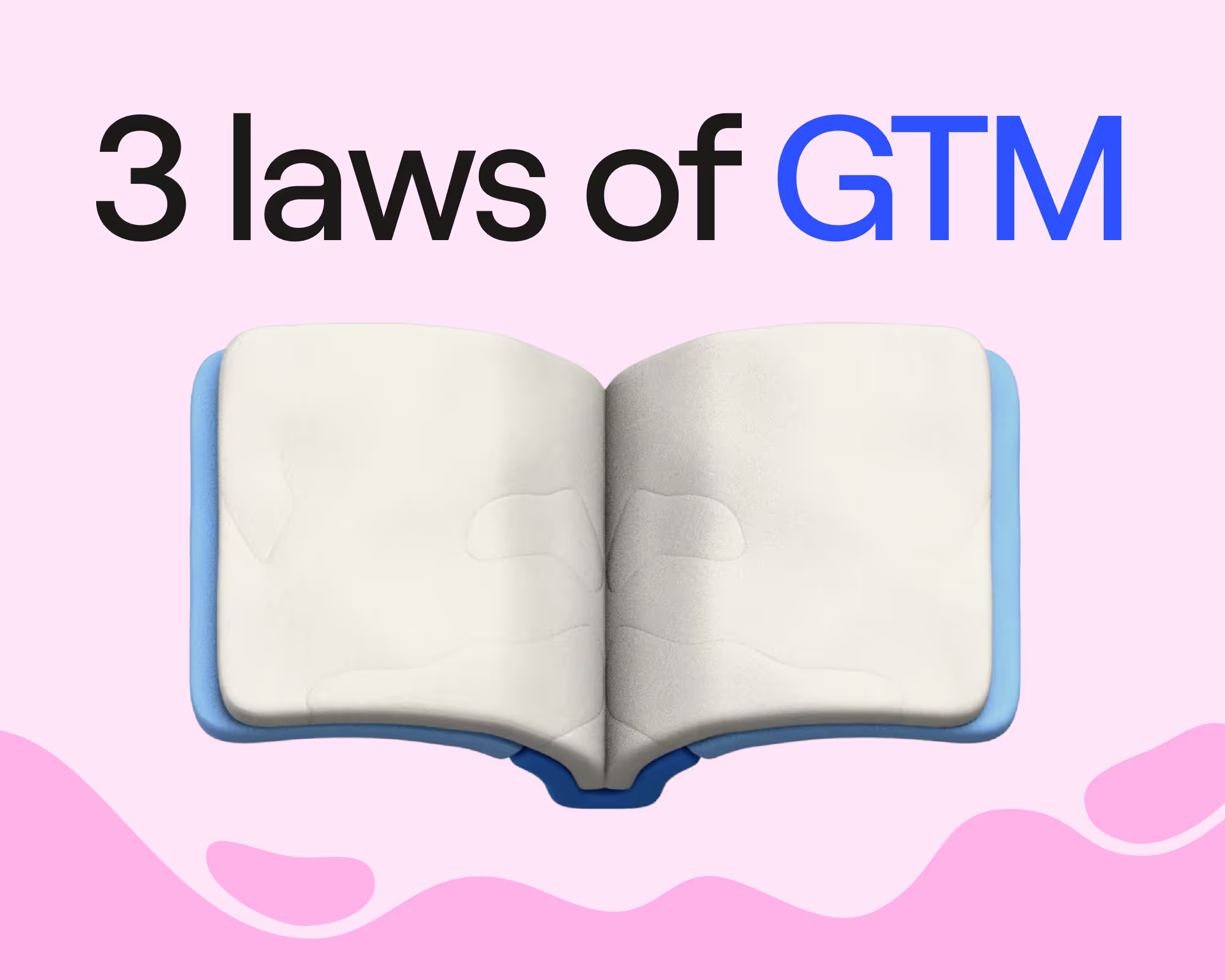

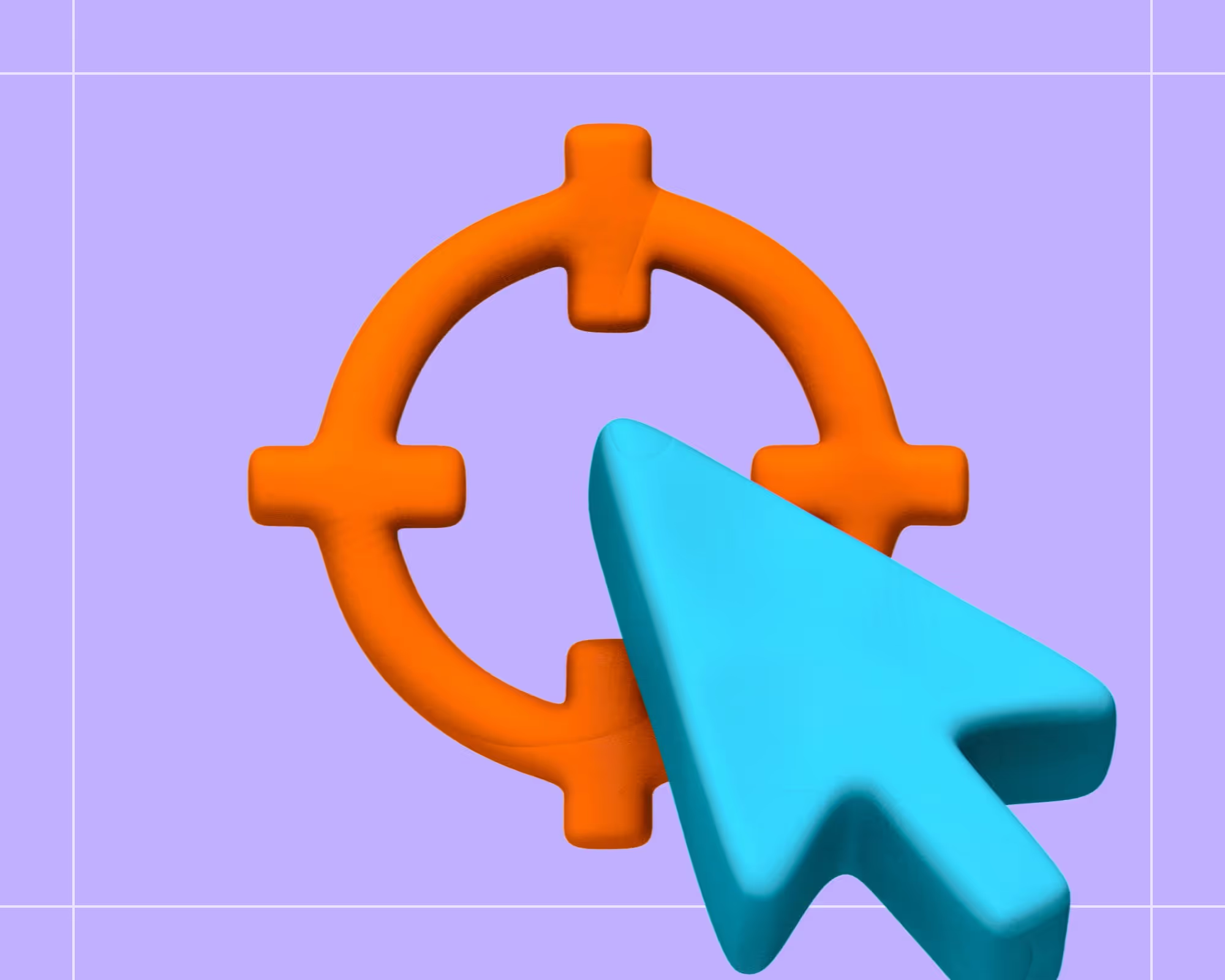


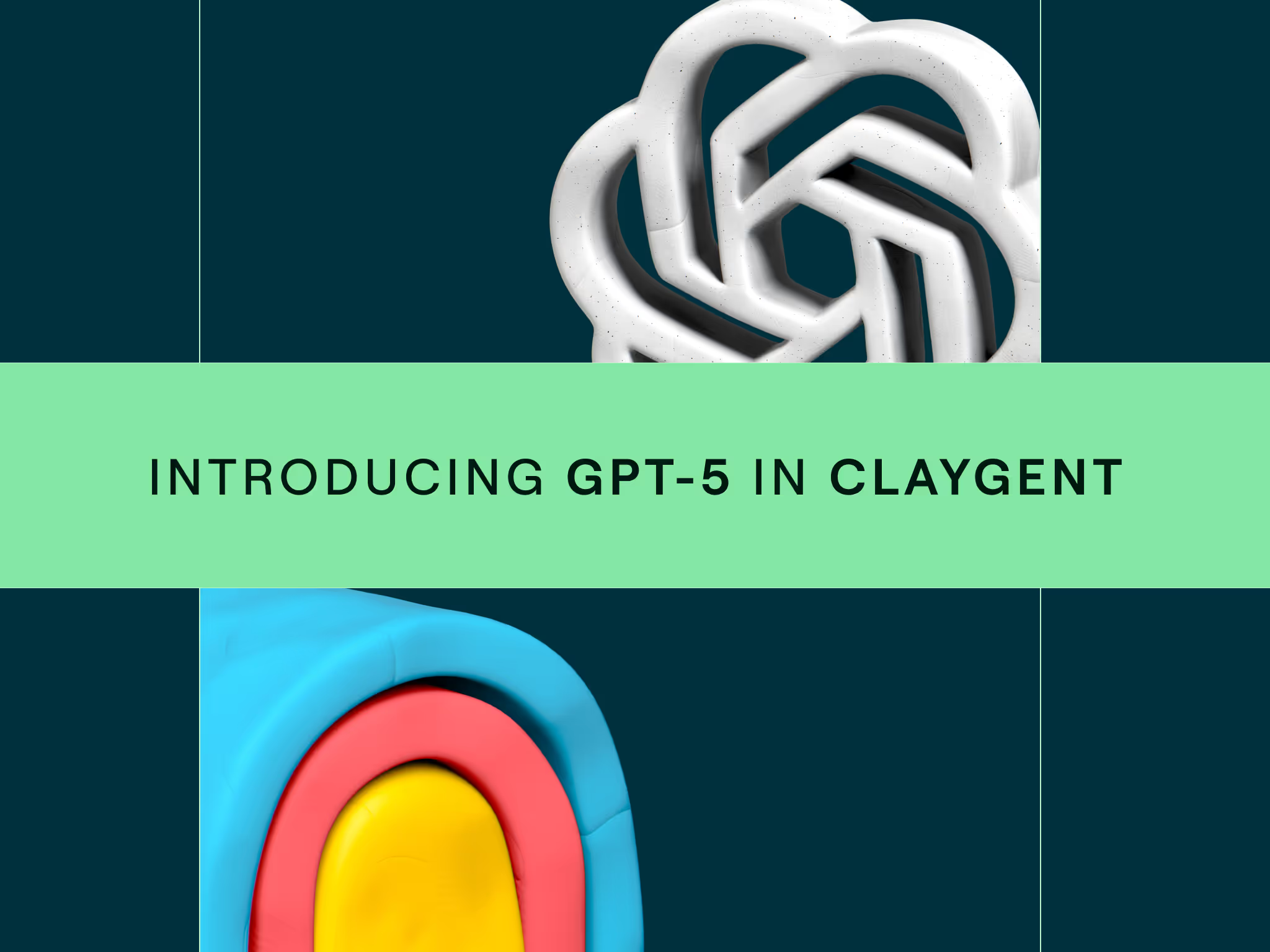



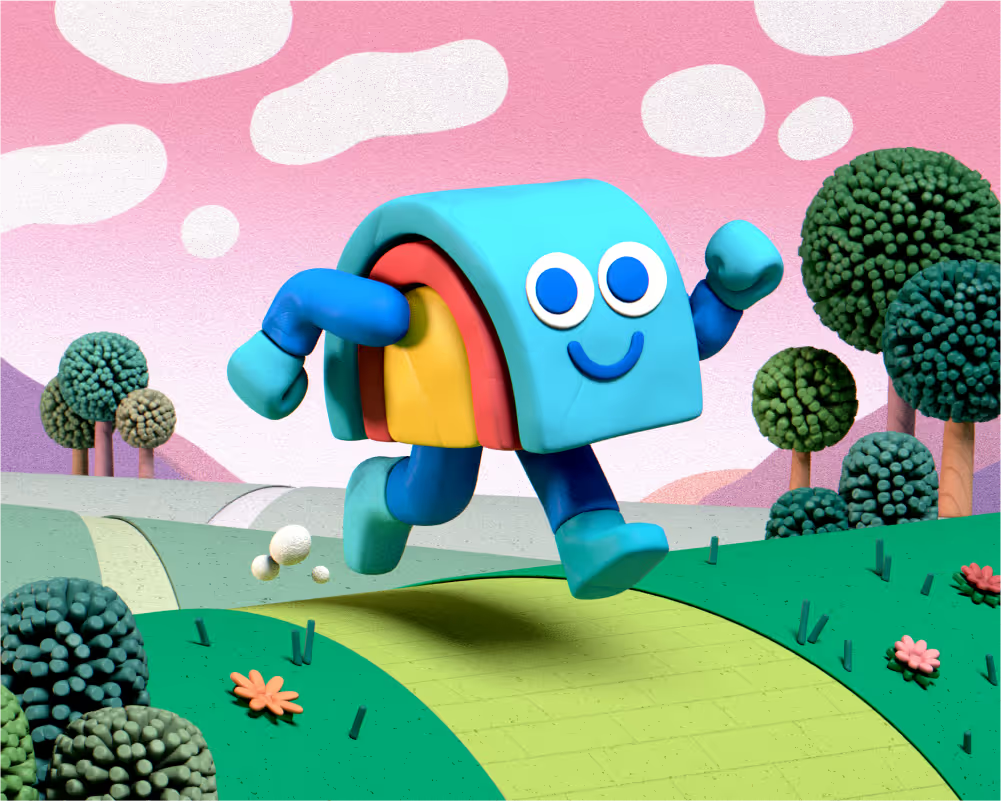
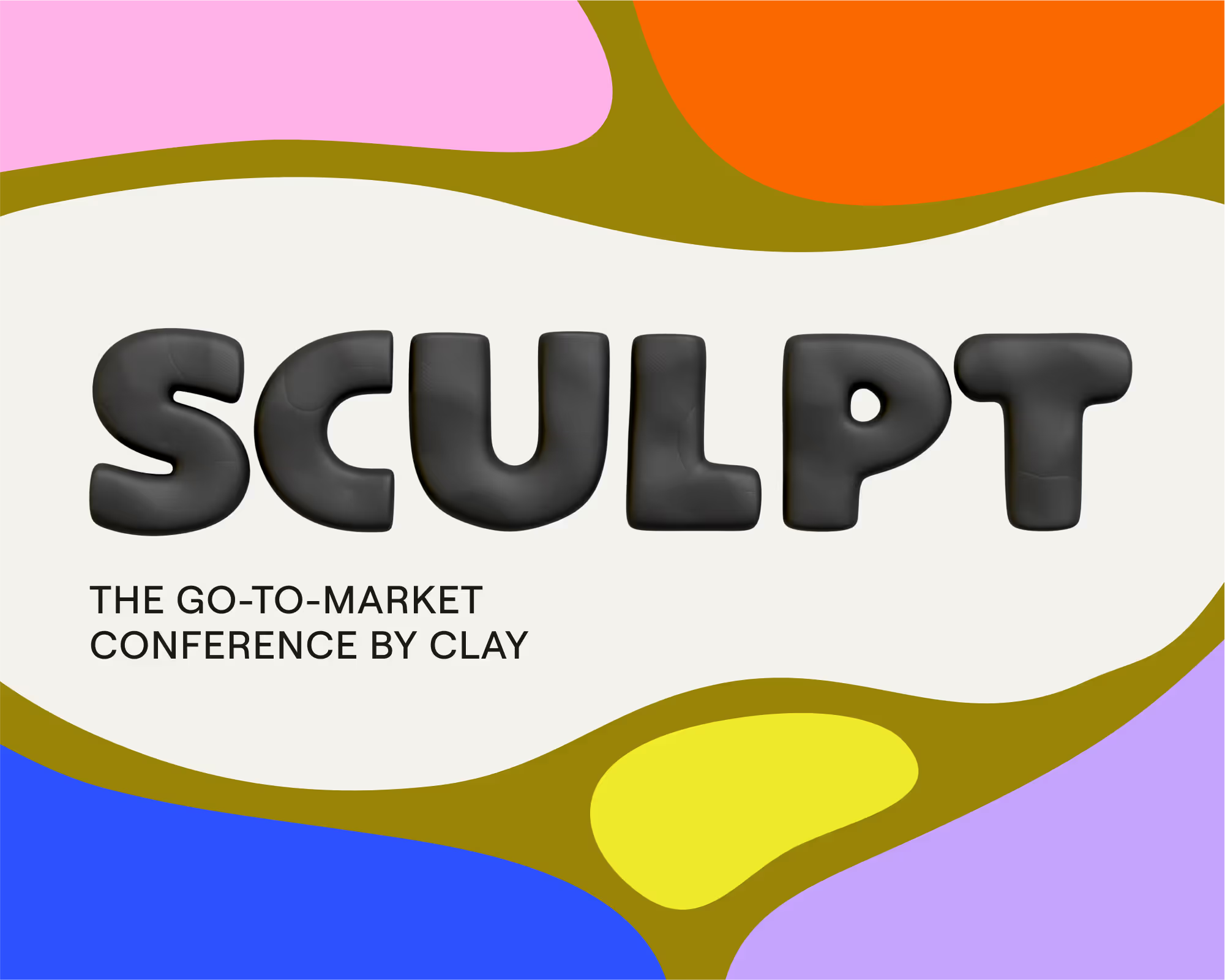
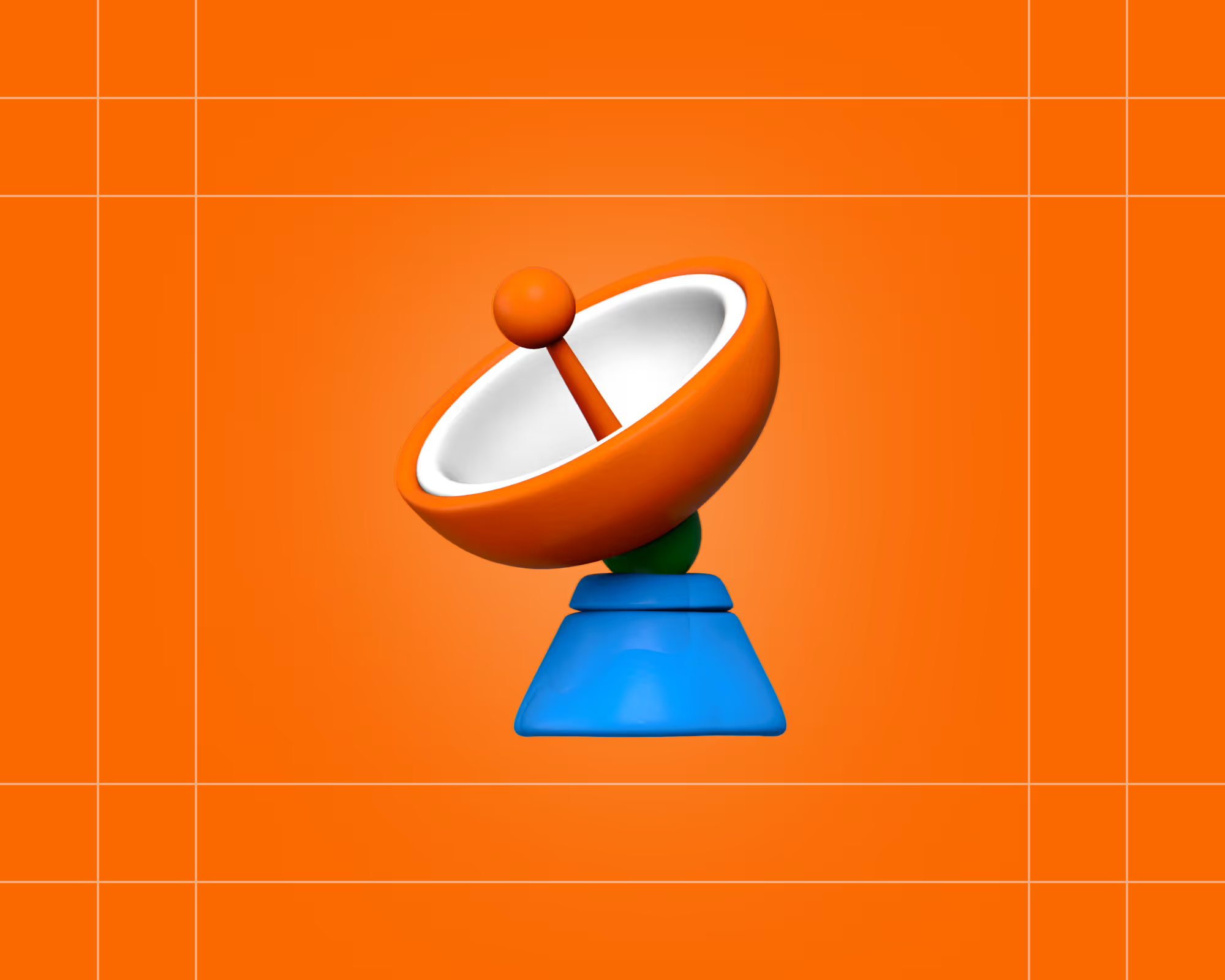

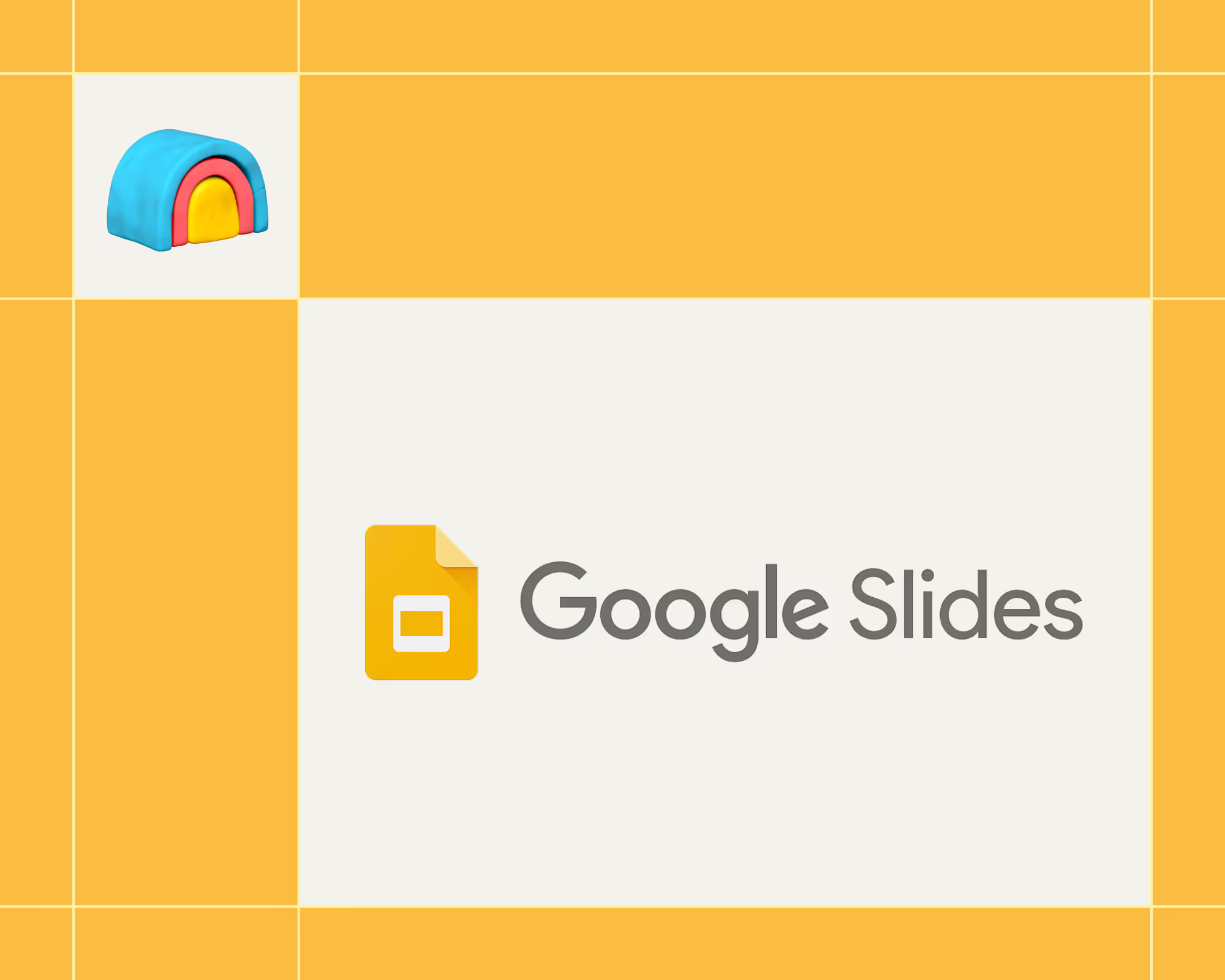
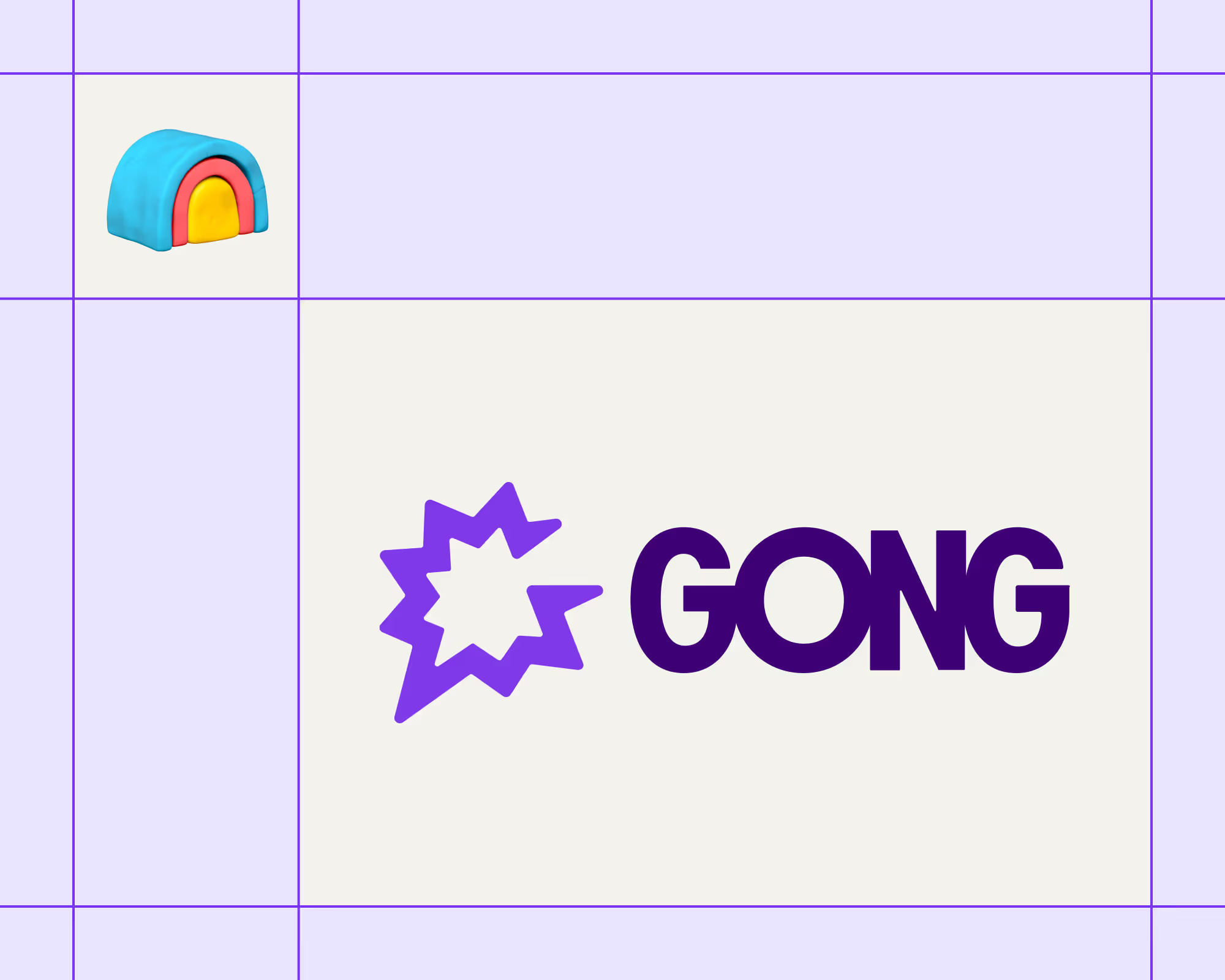

.avif)











.avif)
.avif)






















































